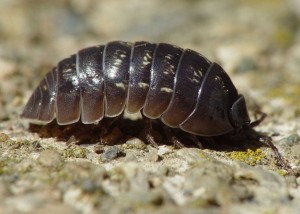 For most U.S. residents, the closest thing to an armadillo with its armor plates is the tiny garden pill bug. The armadillo, notably the nine-banded variety (Dasypus novemcinctus), is found in Texas and Louisiana. While it seems cute, the armadillo causes health risks if eaten or touched.
For most U.S. residents, the closest thing to an armadillo with its armor plates is the tiny garden pill bug. The armadillo, notably the nine-banded variety (Dasypus novemcinctus), is found in Texas and Louisiana. While it seems cute, the armadillo causes health risks if eaten or touched.
Don’t Touch an Armadillo?
What is it bad to touch an armadillo? It carries Mycobacterium leprae, that causes Hansen’s Disease. Better known as leprosy, this awful disease is believed by some to occur only outside the U.S. In actuality, PubMed Health tells us1 about 100 new cases occur in the U.S. each year.

Symptoms of Leprosy
There are two forms of leprosy, tuberculoid and lepromatous. There is a long, symptom free incubation period. Leprosy decreases color or causes a red skin pigmentation. Also loss of skin sensitivity, numbness, muscle weakness, and disfiguring sores.
The good news is leprosy is not very contagious. It usually takes repeated exposure to pass it on to others. One way is by sneeze droplets from an infected person.

Presence in Animals
Although advanced leprosy is easily recognized in humans, it occurs in animals as well. These include the sooty mangabey monkey. Leprosy responds to treatment. But there are cases of drug resistance. Early treatment assures minimal disfiguring.
Another Disease Hazard
Leprosy isn’t the only disease passed on via armadillo. Another is Chagas’ disease (American trypanosomiasis). The dog and the opossum may transmit Chagas’ disease. Fortunately, it is not often seen in the U. S. Yes, there is a simple way to avoid leprosy and Chagas’ disease. Don’t touch an armadillo!
1 PubMed Health: Leprosy – Hansen’s Disease
Note: You might also enjoy Can the Eating of a Rabid Animal Give You Rabies?
References:

My goodness! I knew leprosy was still around but I didn’t realise you could get it from Armadillos!
Wow that’s scary hope I don’t accidentally touch one.